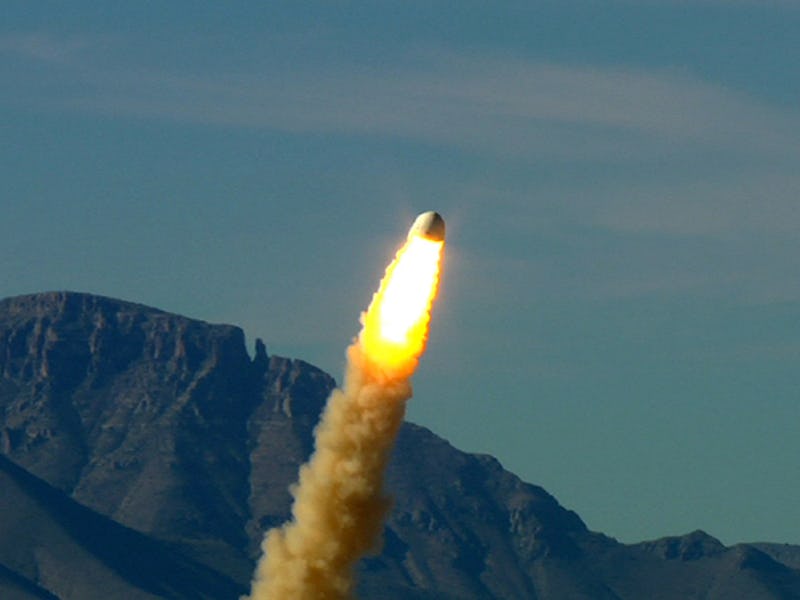Thanks to an unexpected email blast from Blue Origin CEO Jeff ‘El Jefe’ Bezos, we know that the private spaceflight company’s flagship New Shepard vehicle is about to get some explosive tests.
Bezos said his company is currently preparing to test out New Shepard’s emergency escape system, which is a complete departure from traditional spacecraft escape technology, in early October.
Since the Mercury program, escape systems have been a staple part of spacecraft. New Shepard is looking to make sure its suborbital vehicle is equipped to allow its crew capsule to safely jettison from the rocket booster in case of an unanticipated problem during launch.
As Bezos describes it, New Shepard’s system will be completely different from what has been standard for the Mercury, Apollo, and Soyuz spacecraft. Those vehicles used a mounted escape motor that would pull the capsule away from a failing booster. Unfortunately, this mechanism means you have to jettison the escape motor and tower on top in order to allow the capsule to reenter Earth’s atmosphere and safely deploy a parachute. The loss of both items is a steep cost — not to mention the failure to lose the tower can be fatal to the crew.
The escape motor firing off the capsule away from the booster.
New Shepard’s escape motor is designed instead to push away the capsule from the booster. A solid rocket motor fires for two seconds to get to capsule to a safe distance away from the booster. The capsule can then launch its parachutes and descend slowly down to the ground.
Safe landing.
Blue Origin’s October test will be the company’s first in-flight test of the escape system and in fact the first in-flight escape test since the Apollo program. The test will actually reuse the same New Shepard booster successfully flown and brought back to Earth four times already. The escape command will initiate about 45 seconds into launch, 16,000 feet in the air.
The test will also mean the likely destruction of the recycled rocket booster the first that’s ever been launched into space and brought back for a vertical landing. In this instance, the escape mechanism will apply 70,000 pounds of searing hot force thanks to the escape motor exhaust. A vertical landing is out of the question. The booster might remain intact once it slams back to the ground, but if it does, Bezos and his team plan to retire it.
The testing will be webcast live, and we’ll be sure to provide the details on how to watch as they are made available.
